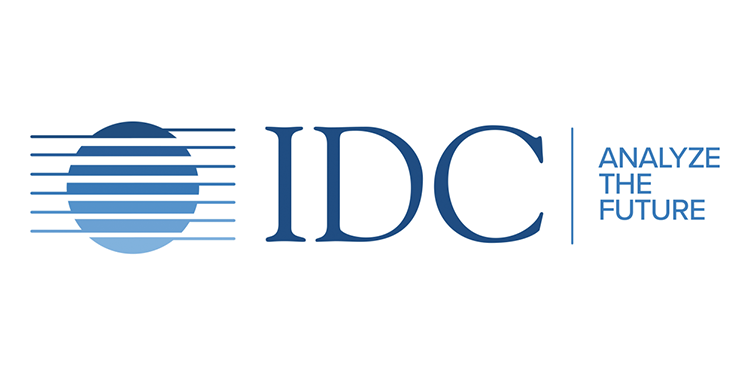In the past few months, as an industry analyst, I've talked with many healthcare clinical and IT executives about how they have responded to the COVID-19 crisis. We've talked about lessons learned and how they can be better prepared for the uncertain times ahead. The UK healthcare sector has seen two years of digital transformation condensed into two months. This has been pivotal to guaranteeing continuity of care and clinical outcomes. As the NHS starts to deal better with the pandemic, this "digital acceleration" can be a catalyst for a new wave of investments to address the chronic challenges in terms of performance, experience, and compliance.
UK healthcare organizations have been pushed to the limit by the pandemic. In a matter of days, they had to reorganize their processes, care capacity and workforce, and even rethink their physical environments. Without a doubt, their passion for their work and their great sense of responsibility to the community have enabled them to weather the storm. At the same time, being able to leverage an agile and reliable digital infrastructure has been a key asset in the battle against COVID-19.
Healthcare digital infrastructures had to be resilient, scalable, and agile to quickly absorb spikes in demand and adapt to the changing environment. IT departments had to ensure the continuity of key workflows, while helping to set up new wards and facilities, as in the case of the NHS Nightingale hospitals. Information systems needed to be rapidly deployed, augmented, and scaled to support new clinical and back-office needs.
The adoption of new technology delivery models has been a key differentiator in response effectiveness. During the crisis, for example, investments in virtual desktop infrastructure (VDI) brought immediate benefits. VDI enabled new workforce organizational set-ups, providing real-time access to resources, even in complex and dynamic situations. Thanks to VDI, NHS IT departments have made clinical information systems easily accessible from a variety of devices and in different care settings. This has been instrumental in deploying telehealth and increasing collaboration within and across primary and secondary care, ensuring access and care continuity for all patients. VDI has enabled work-from-home programmes for all non-essential staff — keeping them safe while they were keeping key back-office functions going. This has also applied to the management of IT department staff. One of the key challenges for NHS CIOs has been ensuring organizational and operational redundancy for their teams. Accessing key systems remotely from home has enabled them to reduce the risk of staff falling sick, safeguarding skills, and IT operations continuity.
But the unprecedented challenges brought about by COVID-19 have also highlighted how decisions on infrastructure can prevent healthcare organizations from taking full advantage of technologies such as VDI. Traditional architectures were unable to handle the unexpected spikes in resource consumption and the number of users. These limitations have further emphasized the complex requirements when managing VDI.
Even before COVID-19, healthcare was evolving towards integrated care models that leverage telehealth, remote working, and patient information sharing. In these collaborative models, health workers need and expect flawless systems and data availability. For them, the digital workspace needs to be invisible. Only those organizations that planned for VDI as part of a broader datacentre virtualization strategy — leveraging on-premises and cloud capabilities, for example — were able to provide that computing experience during the crisis. They were able to connect and consolidate different parts of IT infrastructure to increase workload focus and improve data efficiency, elasticity, and protection. Running VDI on hyperconverged platforms ensures adequate performance for different users' workloads, whether that's updating observations on EPRs during ward rounds or analyzing images and lab results on a tumour board review.
These benefits confirm how infrastructure modernization is the stepping stone for the intelligent enterprise. This is particularly true for healthcare, where legacy systems are often a barrier to scaling innovative projects.
IDC research shows that workload modernization and improved automation and orchestration are top priorities for European healthcare organizations when they were asked about their datacentre transformation strategy. Healthcare organizations should leverage new opportunities for infrastructure modernization, exploring cloud technologies to extend the reach and performance of their on-premises capabilities.
It's about future-proofing the organization's IT investments, as the University Hospital of Plymouth NHS Trust and the Chesterfield Royal Hospital NHS Foundation Trust show. When they decided to replace their legacy three-tier infrastructures, they wanted a solution that could support current and future needs. Migrating everything to public cloud wasn't feasible, given the vast number of legacy applications, virtual desktops and archives running on different environments. They opted for a hybrid cloud platform that modernizes their on-premises infrastructure management, supporting their ongoing virtualization initiatives in a centralized and simplified manner. These platforms will enable them to easily add compute and storage capacity when needed, and will be ready to support their future cloud plans. This approach offers a single and coherent environment to manage their infrastructure, which is essential to reduce costs and avoid trade-offs on compliance, security and resilience. For example, with cyberattacks at an all-time high in the NHS, centralized management and control over all compute, virtualization, and storage resources can help apply data and infrastructure security policies and enhance failover procedures.
One of the key lessons of these unprecedented times is that we need to plan for modern healthcare digital infrastructures by focusing on the main objectives of choice, simplicity, and flexibility. By doing this, healthcare organizations will be able to adapt to both ongoing and unexpected requirements, enabling digital infrastructures to make a real impact on quality of care and economic sustainability.
© 2020 Nutanix, Inc. All rights reserved. Nutanix, the Nutanix logo and the other Nutanix products and features mentioned on this post are registered trademarks or trademarks of Nutanix, Inc. in the United States and other countries. All other brand names mentioned on this post are for identification purposes only and may be the trademarks of their respective holder(s). This post may contain links to external websites that are not part of Nutanix.com. Nutanix does not control these sites and disclaims all responsibility for the content or accuracy of any external site.
Our decision to link to an external site should not be considered an endorsement of any content on such a site. Certain information contained in this post may relate to or be based on studies, publications, surveys and other data obtained from third-party sources and our own internal estimates and research. While we believe these third-party studies, publications, surveys and other data are reliable as of the date hereof, they have not independently verified, and we make no representation as to the adequacy, fairness, accuracy, or completeness of any information obtained from third-party sources.

